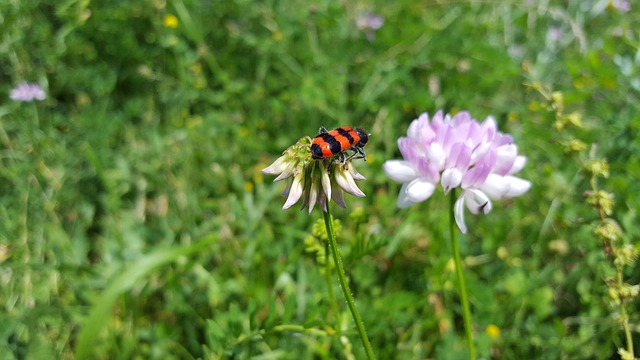 |  |  |  |  |
 |  |
Crown-vetch Coronilla
is a perennial herb 30-100 cm tall, with a creeping, branched root. It has a pair of almost erect, branched, glabrous, grooved stems, with hollow knots. Leaves compound, odd tufted compound leaves, upper sessile. Flowers zygomorphic (incorrect), arranged in a raceme inflorescence.
The fruit is a bean, which splits into lobes when ripe. Light-loving, frost-resistant (<33C), drought-resistant plant. Blooms in May-August, seeds begin to ripen in June.
It should be noted that the
crown-vetch is a poisonous plant. Therefore, you need to collect the plant, fruits and seeds carefully, besides, the seeds are highly toxic. The plant is harvested in May-August. Side shoots with fruits are cut, fruit stalks are separated, dried. The fruits are crushed and sieved through a sieve.
Lilacs with flowers are collected in May-August. Cut the surface part, clean from dried parts. Then finely cut and spread on a drying mesh (3-5cm thick), dry in a well-ventilated room, protected from the sun. The drug needs to be stirred frequently until it dries completely. The resulting drug is stored in bags for no longer than one year.
The
crown-vetch Coronilla
contains glycosides coronillin, pseudocoumarin, tannins, ascorbic acid) up to 27.5mg% on fresh plant mass), carotene (2.6-10.6mg%). Essential oil (0.16%) and traces of alkaloids were found in the flowers. Cardiac glycosides extracted from the seeds: coroniside, coronilin. In addition, the seeds contain the carbohydrate stachyose, vegetable fats, saturated fatty acids, uric acid. Lacs and seeds contain nitrogenous compounds, tannins, coumarins, tannins, flavonoids, organic acids, catechins, vitamin C, galactose, phenolic carbonates, anthocyanins, etc.
Medicinal significance
The medicinal properties of the
crown-vetch Coronilla
have been insufficiently studied. However, it is known that the plant has an antibacterial and hemostatic effect. The cardiac glycoside coronizide present in the seeds has a beneficial effect on the functioning of the heart. The plant is also a good diuretic and helps to deal with edema.
This plant is also used in folk medicine. Infusions and decoctions are prepared from the leaves of the plant, which act as a diuretic and have a hemostatistical effect, and also normalize heart function. Plant preparations are used to treat pulmonary tuberculosis, diathesis, ascites, colitis, gastroptosis, fever, dysentery, malignant tumors (suppresses cell development).
In folk medicine, the decoction is used to treat ailments caused by lifting too much weight (stomach prolapse), bloody diarrhea and stomach ailments. Fresh grass is crushed into a homogeneous slurry and applied to skin injuries, wounds, cuts, also as a means of stopping bleeding.
Decoctions and infusions of the above-ground part of plants are used as teas against nervousness of the heart, which is accompanied by asthmatic attacks. In folk medicine, the setting of the changing crown is used as a means of removing edema - in case of joint diseases, especially the foot and knee joints. The plant's ability to act on blood vessels allows it to be used in atherosclerosis.
Effective preparations are made from fruits and seeds, combined with other medicinal plants, to treat various ailments. For example, to activate the heart and prevent arrhythmia, the seeds of the
crown-vetch Coronilla
were used, together with the fruits of the hawthorn.
Phytotherapists believe that the preparations of the
crown-vetch Coronilla
are able to improve the blood circulation of the brain, so it is useful to add the drug of mountain arnica.
People noticed the cardiostimulating effect of this plant a long time ago. After using the
crown-vetch Coronilla
setting, the heart quickly feels an improvement in the overall condition, especially in the heart area. These preparations are effective in the case of edema caused by the heart, shortness of breath decreases and urine output increases.
